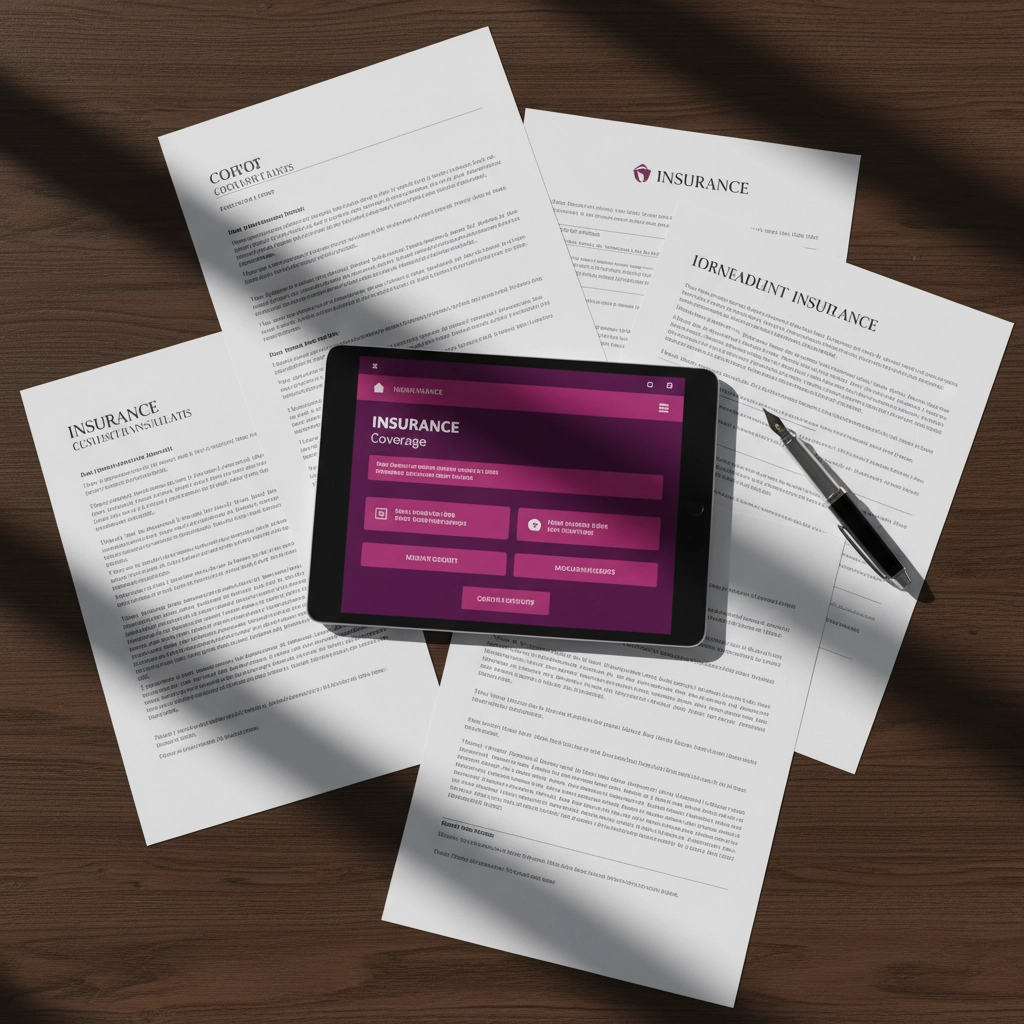Alabama's uninsured motorist crisis presents both significant challenges and lucrative opportunities for independent insurance agents. With approximately 19.5% of Alabama drivers operating without insurance coverage: nearly double the national average: the state ranks among the highest for uninsured motorists nationwide. This comprehensive analysis examines the regulatory landscape, compliance requirements, and strategic approaches agents need to effectively serve Alabama clients while maximizing revenue through proper UM/UIM coverage sales.
The Scope of Alabama's Uninsured Driver Problem
Current data reveals that one in five Alabama drivers lacks mandatory insurance coverage, creating a $2.6 billion annual economic impact across the state's insurance ecosystem. The Alabama Department of Insurance reports that uninsured motorist accidents result in approximately 47,000 claims annually, with average settlement values exceeding $23,000 per incident.
Market analysis indicates several contributing factors to Alabama's elevated uninsured driver rates:
- Economic pressures in rural counties where 31% of drivers lack coverage
- Limited enforcement mechanisms for continuous coverage verification
- High poverty rates correlating with insurance purchase decisions
- Insufficient penalties for driving without insurance
For independent agents, these statistics translate to increased demand for comprehensive UM/UIM protection and higher conversion opportunities when properly positioned.

Understanding UM/UIM Coverage Fundamentals
Uninsured Motorist (UM) coverage protects policyholders when struck by drivers without liability insurance or in hit-and-run scenarios. Underinsured Motorist (UIM) coverage extends protection when at-fault drivers carry insufficient limits to cover damages fully.
Alabama's minimum liability requirements of $25,000/$50,000/$25,000 create substantial coverage gaps when serious injuries occur. Medical expenses from moderate-severity accidents routinely exceed $100,000, leaving significant exposure for victims whose injuries surpass available coverage limits.
Key coverage components include:
- Bodily injury protection for policyholder and passengers
- Property damage coverage for vehicle repairs
- Medical expense reimbursement regardless of fault determination
- Lost wage compensation during recovery periods
- Pain and suffering damages in qualifying circumstances
Industry data shows UM/UIM claims severity averaging 340% higher than standard liability claims, reflecting the concentrated impact on seriously injured victims who exhaust primary coverage sources.
Alabama's Regulatory Framework and Compliance Requirements
Alabama Code § 32-7A-4 mandates that all auto insurance policies include UM coverage equal to liability limits unless specifically rejected in writing. This regulatory structure creates automatic inclusion requirements that benefit both consumers and agents through enhanced protection and commission opportunities.
The selection and rejection process involves specific compliance elements:
- Mandatory offer requirement: Insurers must present UM/UIM options at policy inception and renewal
- Written rejection necessity: Policyholders cannot decline coverage through verbal communication
- Equal limits provision: UM coverage must match liability limits unless lower amounts are specifically requested
- Stacking permissions: Alabama allows both intra-policy and inter-policy stacking for enhanced coverage
Agents must understand that improper handling of UM/UIM selection creates significant E&O exposure. Documentation requirements include maintaining signed rejection forms and ensuring clients understand coverage implications before declining protection.

Strategic Sales Approaches for UM/UIM Coverage
Effective UM/UIM sales strategies leverage Alabama's uninsured driver statistics while addressing common client objections about premium costs. Research indicates that properly trained agents achieve 73% UM/UIM acceptance rates compared to 41% for agents using generic presentations.
Value-Based Positioning Techniques:
- Present uninsured driver statistics specific to client ZIP codes
- Calculate potential out-of-pocket exposure scenarios
- Demonstrate premium-to-protection ratios showing favorable cost structures
- Utilize claims examples from similar demographic profiles
Overcoming Price Objections:
UM coverage typically adds $180-$240 annually to standard policies, representing 12-18% premium increases for comprehensive protection against one-in-five exposure probability. Agents can frame this cost as $15-20 monthly for protection against potentially catastrophic financial exposure.
Digital Presentation Tools:
Modern sales presentations benefit from interactive coverage calculators and real-time premium comparisons. Visual demonstrations of coverage gaps and financial exposure scenarios prove more effective than traditional verbal explanations.
The UM/UIM Selection and Rejection Form Process
Proper form completion represents critical compliance and customer service elements that differentiate professional agencies from competitors. Alabama's rejection forms require specific disclosures and acknowledgments that protect both insurers and agents from future disputes.
Essential Form Elements:
- Clear explanation of coverage benefits and exclusions
- Specific premium amounts for various coverage levels
- Client acknowledgment of uninsured driver statistics
- Written confirmation of voluntary rejection decision
- Signature and date requirements with witness provisions where applicable
Documentation Best Practices:
Agents should maintain comprehensive files documenting client education efforts, coverage explanations provided, and decision-making processes. Digital storage systems enable quick retrieval during claim investigations or E&O inquiries.
Technology-Enhanced Compliance:
Modern agency management systems integrate UM/UIM tracking capabilities that flag policies without coverage and automatically generate renewal reminders for rejected coverages. These systems reduce compliance risks while identifying cross-selling opportunities.

Claims Scenarios and Coverage Applications
Understanding common UM/UIM claim scenarios enables agents to provide concrete examples during sales presentations. Alabama's claims data reveals specific patterns that agents can leverage for educational purposes.
Typical Claim Categories:
- Hit-and-run accidents accounting for 23% of UM claims
- Uninsured driver accidents involving significant injuries (31% of claims)
- Underinsured driver accidents where liability limits prove insufficient (46% of claims)
Financial Impact Examples:
A moderate rear-end collision resulting in herniated disc injuries typically generates $85,000-$150,000 in medical expenses. When caused by Alabama's minimum $25,000 liability coverage, UM/UIM becomes essential for full recovery.
Settlement Timeframes:
UM/UIM claims average 147 days for resolution compared to 89 days for standard liability claims, reflecting additional investigation requirements and coverage determination processes.
Technology Solutions for UM/UIM Sales and Compliance
Digital transformation enables independent agents to streamline UM/UIM sales processes while maintaining comprehensive compliance documentation. InsureScan's mobile platform integrates UM/UIM presentation tools with instant quoting capabilities, allowing agents to demonstrate coverage benefits and bind policies in approximately 90 seconds.
Mobile Sales Advantages:
- Real-time premium calculations for various UM/UIM levels
- Interactive coverage gap analysis showing potential exposure
- Digital signature capture for selection/rejection forms
- Automated compliance tracking and renewal notifications
Efficiency Improvements:
Traditional UM/UIM sales discussions require 12-15 minutes for proper explanation and form completion. InsureScan's streamlined workflow reduces this timeframe to under three minutes while improving comprehension through visual demonstrations.
Documentation Management:
Digital form completion eliminates paper handling while creating audit trails for regulatory compliance. Automated storage systems ensure form accessibility during claim investigations or Department of Insurance examinations.

Market Opportunities and Revenue Enhancement
Alabama's uninsured driver problem creates substantial revenue opportunities for agents who effectively position UM/UIM coverage. Commission structures typically provide 12-15% on UM/UIM premiums, generating $22-36 additional annual commission per policy.
Cross-Selling Integration:
UM/UIM sales conversations naturally lead to discussions about comprehensive coverage, rental reimbursement, and gap insurance. Agents report 34% higher per-policy revenue when UM/UIM sales trigger additional coverage purchases.
Retention Benefits:
Policies with comprehensive UM/UIM coverage demonstrate 23% higher retention rates, reflecting increased client satisfaction and perceived value. This retention improvement significantly impacts long-term agency profitability through reduced replacement costs.
Competitive Differentiation:
Agencies emphasizing UM/UIM education and proper coverage selection differentiate themselves from price-focused competitors. Clients appreciate thorough coverage explanations and professional guidance through complex protection decisions.
Implementation Strategies for Agency Success
Successful UM/UIM sales programs require systematic approaches encompassing staff training, process standardization, and technology integration. Leading Alabama agencies implement comprehensive frameworks addressing all aspects of coverage presentation and form completion.
Staff Development Requirements:
- Comprehensive training on Alabama's uninsured driver statistics
- Role-playing exercises for common objection handling
- Regular updates on regulatory changes and form requirements
- Technology proficiency for digital presentation tools
Process Standardization:
Consistent UM/UIM presentation methods ensure all clients receive complete information regardless of staff member conducting sales. Standardized scripts and presentation materials improve conversion rates while maintaining compliance standards.
Performance Measurement:
Tracking UM/UIM acceptance rates, average coverage levels sold, and client satisfaction scores enables continuous improvement and identifies training opportunities. Benchmark data indicates top-performing agencies achieve 75%+ UM/UIM acceptance rates.

The convergence of Alabama's uninsured driver crisis with advanced insurance technology creates unprecedented opportunities for independent agents. Those who master UM/UIM sales processes while leveraging digital tools like InsureScan's scan-to-quote platform position themselves for sustained growth in an evolving marketplace. The combination of regulatory compliance, professional coverage consultation, and technology-enabled efficiency represents the future of successful agency operations in Alabama's challenging insurance environment.
For agents ready to transform their UM/UIM sales approach, InsureScan's mobile platform provides the tools necessary to compete effectively while serving clients' protection needs. Learn more about our Alabama-specific capabilities at insurescan.com/AL.html.
